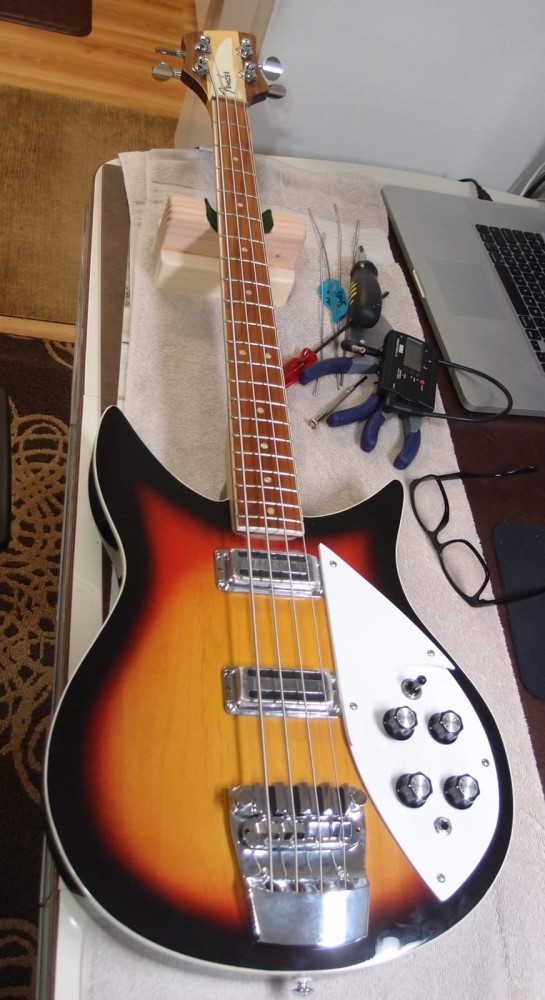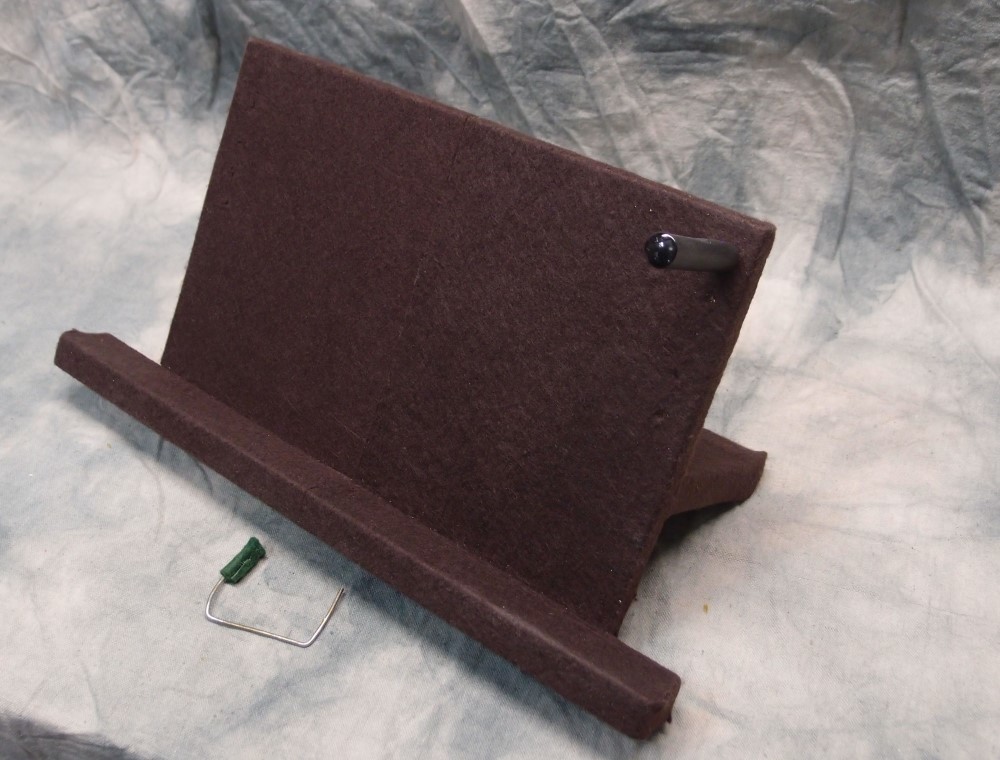Mash-Ups

To my mind, there are three kinds of "mash-up": functional, constructive, and stylistic.
- A functional mash-up changes the purpose of the base instrument, for example, building a bass on a guitar body. The Uke bass takes this to an extreme.
- A constructive mash-up is building a classic design in a different way, for example, substituting masonite and plywood for rare and expensive "tonewoods" ( most of which are in truth neither rare nor expensive, although you can pay a lot for them if you shop in the right places. )
- A stylistic mash-up consists of taking features from two or more different instruments and jamming them together. For example, horns on a violin body.
A fourth type of mash-up might be electronic - installing different pickups, etc, but this is trivial, and I often do it in conjunction with one of the other categories.
I really enjoy the first and second categories. In fact, almost all of my builds fall into one or the other or both. However, the third category, the purely stylistic mash-up, leaves me cold.
I appreciate the classic designs. My personal all-time favorite is the Stratocaster - a work of art worthy of being displayed in a museum, and it is actually in a number of them. All of Fender's early designs, a few of Gibson's, my personal favorite Danelectro, Rickenbacker, and many others, simply should not be messed with. In contrast, I find most modern 'original' designs to be clumsy, misshapen, and ugly.
But not as clumsy, misshapen, and ugly as mixing up pieces of them. To me, this is just pointless. As I look at the plans on the Winter Build off, all I can think of most of them is "Why?".

Constructive mash-up - John Lennon's early guitar, right down to the short set of dot markers, built as a Danelectro. The neck is even poplar. One of my neighbors who plays professionally jammed on it for 10 minutes before I interrupted him to point out that it is not a real Rickenbacker. He was quite surprised. You'd think the headstock was a dead giveaway. Or the lipstick pickups and the Tolex binding. It actually plays much better than the real thing*, which is why I think he was swept away.
* I know because this is version 2. Version 1 used the correct Ric string spacing at the nut and bridge and was almost unplayable. They say George Harrison had the skinniest fingers you ever saw. Version 2 is built to Fender specs.

Functional mash-up - the same guitar as a bass. Note the attention to detail, everything is styled correctly after a real Rickenbacker. This is also a constructive mash-up, as the body is alder, with a bolt-on neck. A Fender-style sunburst justifies the headstock. Perhaps when Fender buys Rickenbacker ...
I often do a constructive mash-up as a tribute to the real thing. I'll never own a real B.C. Rich, but I built a pretty nice one, out of a cutting board. That's what I'm doing with the Mosrite above, which will be a medium-scale bass on a guitar body, so also a functional mash-up.
Sometimes I do like to make fun of things. I think I will build an Alembic out of countertop. Of course, I will use premium grade fancy countertop, as befitting the original.
I just got a great idea: Why limit yourself to just two horns? You could install them all the way around! There must be room for at least a dozen! Someone should pick this up. You're free to steal the idea, I don't want it. In fact, I want it out of my head, right now. Out! Out!


Questions or Inquiries?
Just want to say Hello? Sign the .